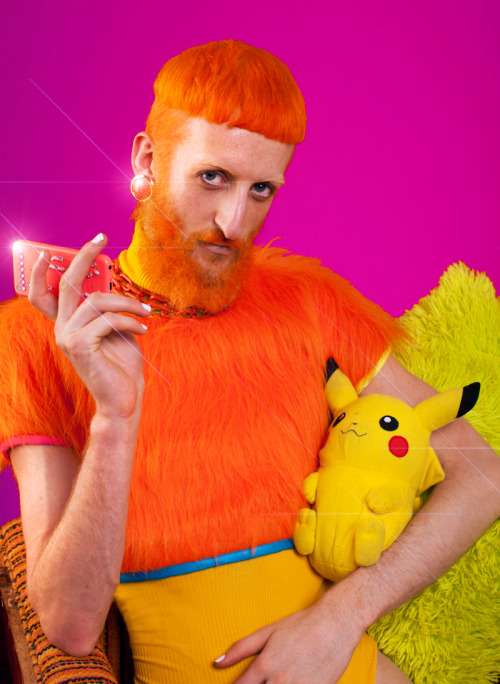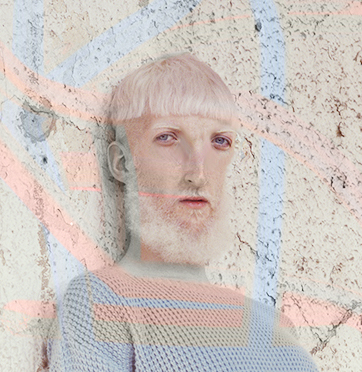Author | Sophie Sotsky
Featured image by Ben Mckernan
“By appealing to our memories of youth, Howlin mobilizes what is perhaps hipsterism’s most powerful tool: nostalgia.”
So, what, exactly, is Neocamp? According to Luke “Neocamp” Howlin, it’s “decontextualized traditional camp within the matrix of new media and web culture.” It isn’t traditional camp but it nods at it with a nostalgic fondness. It incorporates queer history, queer culture, new media and new social paradigms. And it is situated at the intersection of hipsterism’s irony and The New Sincerity.
In other words— it’s a lot like Bushwick.
For 26-year-old Ireland native Luke Howlin, Bushwick is a perfect fit. After graduating from The Limerick School of Art & Design in Ireland, Howlin moved to London for a year and half, where he felt something about the scene wasn’t quite right. But landing here in NYC, “I completely fell in love with it,” he said. Not insignificantly because, “it’s the most queer place I’ve ever really been.”
Photo by Oscar Ouk:
Howlin describes his experiences here in terms of the DIY culture and artistic community, and the tight-knit community of artists, musicians, designers, coming together regularly for weekly parties, events and shows. Here Howlin has found himself constantly collaborating and exchanging ideas. Although at times the constant intermingling is both intoxicating and claustrophobic, mostly, said Howlin, “I find it really inspiring. It keeps me on my toes.”
Metropolitan was the first place he performed in NYC, situating him immediately right in the heart of experimental queer performance.
Here Howlin has honed his own sense of camp against the backdrop of a particularly campy scene. It’s “softer than pure irony,” he said. “It allows you to express your sincerity and your irony.” Howlin is particularly fond of Susan Sontag’s description of camp: “Camp is serious about the frivolous and frivolous about the serious.”
Howlin is now prolific in his artistic pursuits, participating in arts shows, producing photography and drawings, although he focuses primarily on his music. When asked to describe his live performance, he said, “I sing and rap and I usually take some of my clothes off.”
In his recent work, Howlin has been trying to create more of a multimedia experience, incorporating projected video or crafted backdrops. As a Student at The Limerick School of Art & Design, he studied sculpture and combined media, where although he purportedly “never made a sculpture,” he began this practice of sculpting site-specific performance / installation: “Everything that would start off as a sculpture would just turn into a prop for a video or a performance.”
photo by Pablo Lerma:
For Howlin, the sculpting of a visual world goes hand in hand with the music he makes and performs. He describes this process as “visualizing an aural aesthetic, or— creating sound that matches the visual idea.”
This synesthetic thinking is evident in Howlin’s music videos. Howlin has gained significant traction in the past year with the videos he’s made for two songs: Encarta and Info’BRAND.
It was Info’BRAND which really gained him some attention, including on reddit. “When I put that video up, that’s when my new york experience kind of changed.”
For all of the stylized elements of these videos, the most distinctive ingredient is Mr. Howlin himself. In Info’BRAND, his camped — or rather, neocamped twerking, endears and transfixes. In Encarta his distant-cousin-of-voguing captivates.
When his figure strolls into the frame at the top of Encarta, clad in a nude unitard, the sway of his hips is charming and transgressive. Both awkward and confrontational, there’s something vulnerable about this presentation. It feels like self-portraiture.
https://www.youtube.com/watch?v=Syd55ozYfho
In Info’BRAND, when his bunny ears, the tiniest princess crown resting between them, are silhouetted against the neon fauna of Times Square, I feel I’m routing for a twee teenie bopper Deadmau5 raver queen \ princess as she falls down Alice’s rabbit hole.
The name Encarta refers to the digital multimedia encyclopedia published by Microsoft in 1993. Howlin remembers relying on these CD roms for “everything.” “I was trying to link the same kind of outdated modes of being or understanding” with “trendiness,” he told me. (The song’s tagline is “progress forever.”)
Like the term “NeoCamp” itself, Encarta is simultaneously kitschy, cheesy and futuristic.
In his stringent execution of the Bushwick aesthetic, Howlin has successfully neocamped it. By emulating the aesthetic so loyally and sincerely, he both pokes fun and pledges allegiance. It is this frivolous seriousness and serious frivolousness to which Neocamp aspires.
By comparing contemporary tumblr-pop with archaic Encarta, Howlin simultaneously affirms and dismisses trendiness. This passing momentary thing – Bushwick, our beloved queer art scene – that will soon too be outdated, is to be cherished sincerely for how preposterous it will seem in retrospect. Preposterous — and somehow cute, like Encarta seems in this light. An aesthetic unto itself, and all the more sincere for adhering to its own guidelines so strictly. By appealing to our memories of youth, Howlin mobilizes what is perhaps hipsterism’s most powerful tool: nostalgia.


